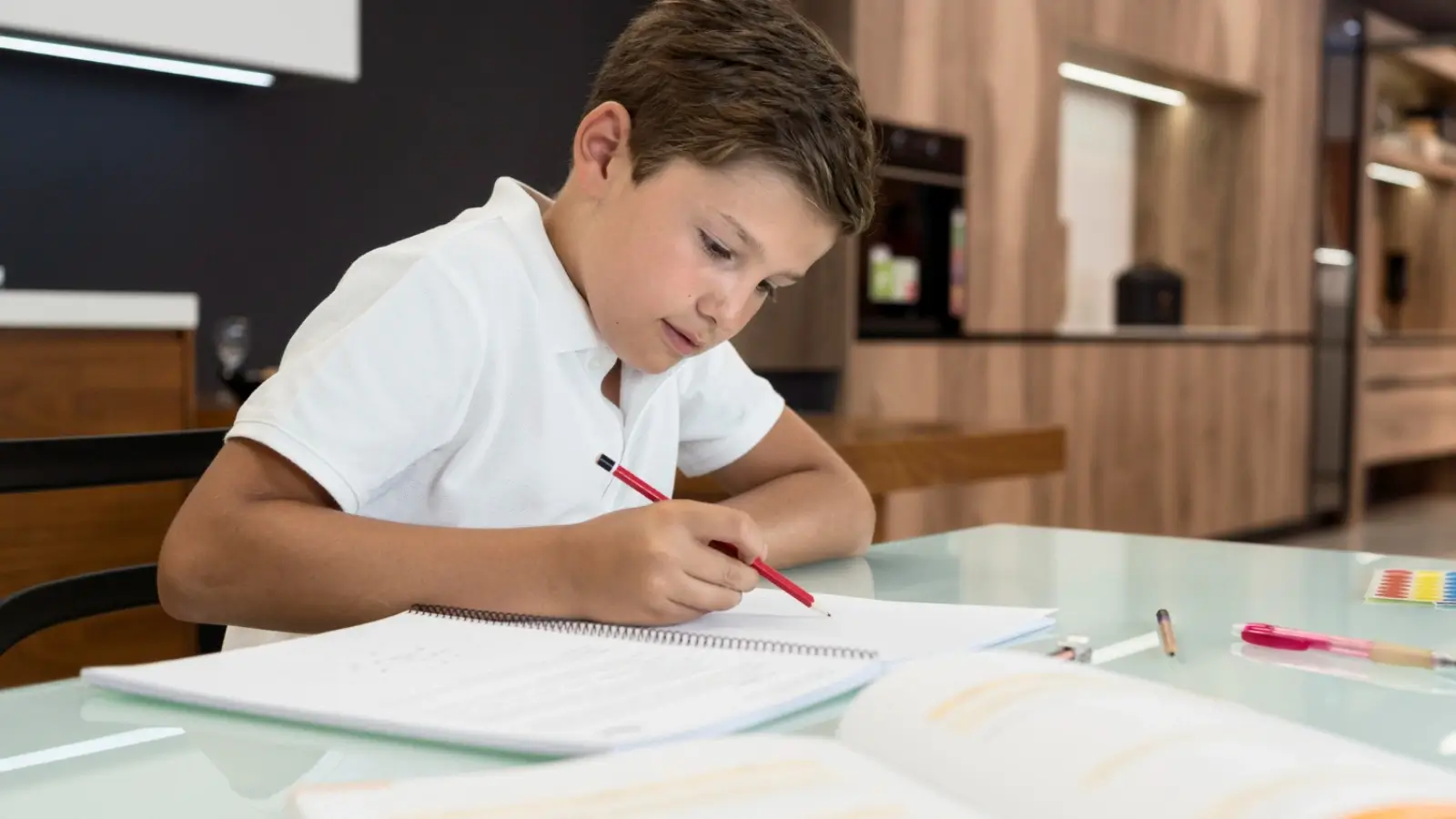


The modern world heavily relies on typing on screens and keyboards, as well as using voice-to-text tools. While people today overlook traditional writing by hand, this evergreen option is helpful for kids.
Writing doesn’t just help expression and communication; it engages the brain in diverse ways. This activity can boost memory and retention in children. If you’re curious, this article will share how writing improves memory retention.
Writing by hand is a complex process. It involves fine motor skills, mental focus, coordination, and engagement of different areas of the brain. Research shows that physically writing by hand activates certain brain regions that impact memory and comprehension. Handwriting enhances memory retention power more than typing.
When kids write by hand, their brain controls the movement of the pen and letter shapes. They mentally process every letter, word, and sentence. They use their fine motor skills and activate multiple sensory pathways (touch, motion, and cognitive skills). These activities improve their learning process, boosting memory.
Moreover, students who take notes by hand retain information better than those who type on a device. This is because handwriting makes the brain process, understand, and summarize the written information better. Thus, it lets kids remember concepts and build a strong foundation.
While writing by hand, children write the same words, sentence types, and information repeatedly. This work strengthens the neural pathways of their brain. Repeating this information helps them recall it.
For instance, repeatedly writing a word helps them remember tricky spellings correctly, helping them avoid silly mistakes later. Likewise, taking handwritten notes on significant concepts during class lets them remember and understand them better.
However, if your child struggles with writing or there’s no improvement despite regular practice, enroll them in a one-to-one kids' writing class with an experienced tutor. The tutor will judge your child’s strengths and weaknesses and personalize tutoring sessions according to your child’s needs. This approach avoids repeating concepts your child has already mastered, a common problem with group tutoring.
While writing on paper, children arrange words on a page using paragraphs, bullet points, and diagrams. These arrangements strengthen their visual and spatial memory, which helps them recall where specific information is located.
For instance, if children want to review a specific concept, they might remember on which page and in which corner they wrote it. If they highlighted the content or added diagrams and charts to it, they also remember those. Handwritten notes boost their memory in ways that reading or listening can’t.
Writing involves structuring sentences, paragraphs, and overall essays. This activity helps kids understand multiple ideas or events. They can connect different subjects, order them sequentially, or distinguish the most important points from the least important ones. It does more than just help kids memorize details.
Suppose there’s an assignment to write a story. Kids must describe characters, their relationship with each other, and the plot. As the story progresses, they recollect the sequence of events and the plot to ensure the story stays coherent. The narration reinforces their memory.
Likewise, when writing a report on a science experiment. They must recall the step-by-step process, the observation, and the inference. This boosts both memory retention and comprehension skills.
Reading and listening are passive activities. Comparatively, writing by hand is an active exercise that promotes deep cognitive processing. It guides kids to assess information and pick what is most important. They choose how to phrase their thoughts and share them to show their logic.
Consider this example: Children must write an essay on an environmental concern.
They have to think about all causes, effects, and potential resolutions. They must review all information and choose the most important. During this process, they form a mental image of the topic, which enhances their ability to recall it. Furthermore, as they convert thoughts into coherent words, they memorize the ideas naturally.
Whether it’s writing about experiences, beliefs, or perspectives, kids connect the material with their lives. They don’t recall random information; instead, they express what they personally saw, heard, felt, or learned at a certain time.
Thus, the content stays with them more naturally in the long run compared to reading a passage or listening to an audio clip. Writing makes the concept more meaningful, so that memorizing becomes effortless.
Writing plays a critical role in strengthening children’s memory and boosting long-term learning. It is not just any exercise for school but a smart way to help young learners tap into the full potential of their brains. So, guide your children to write regularly to become the best in everything.